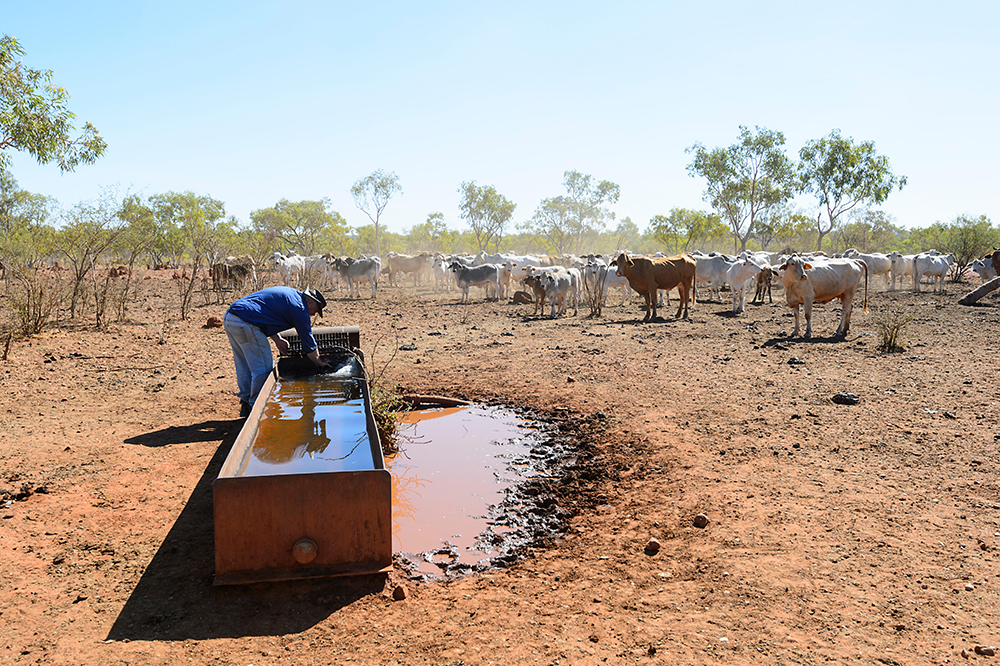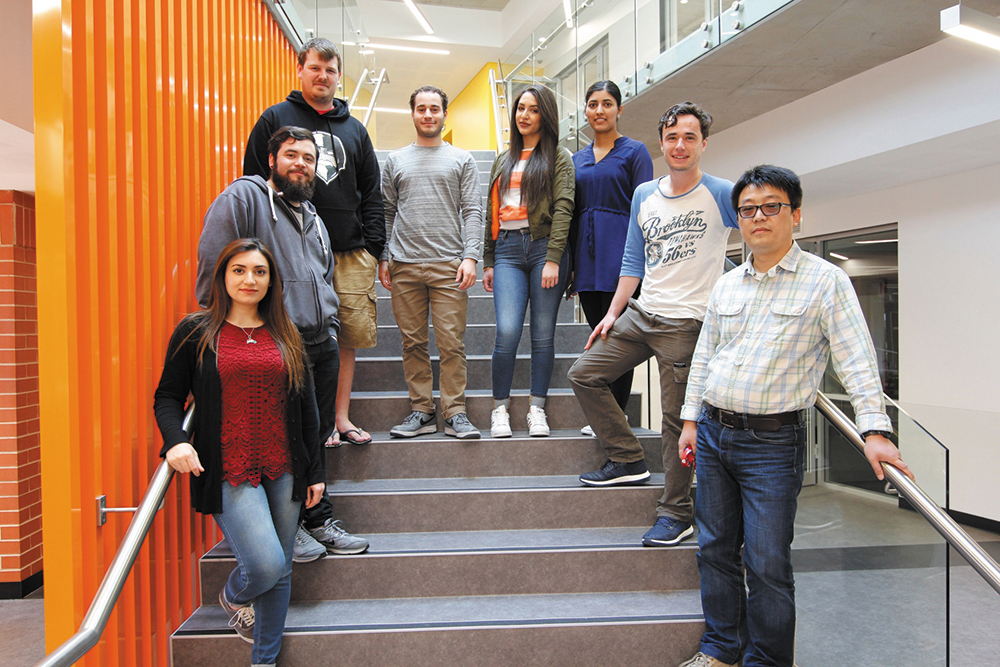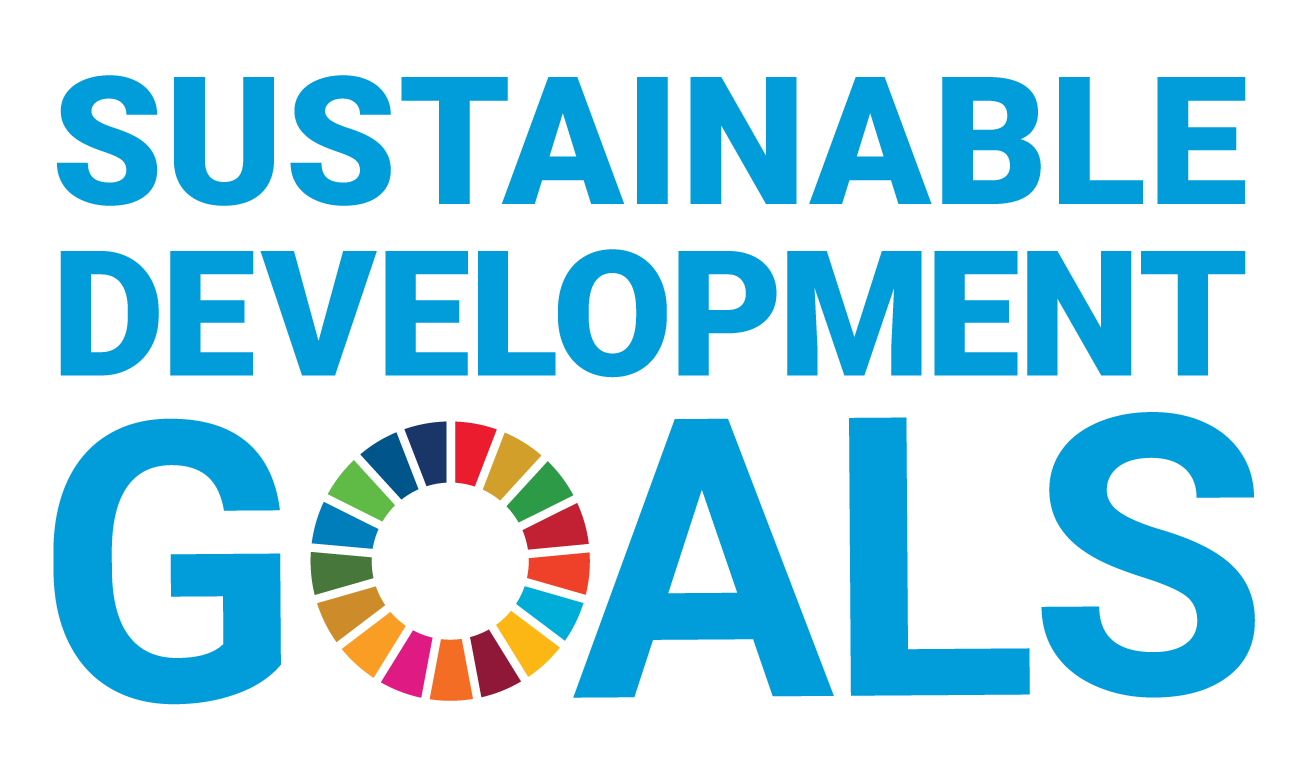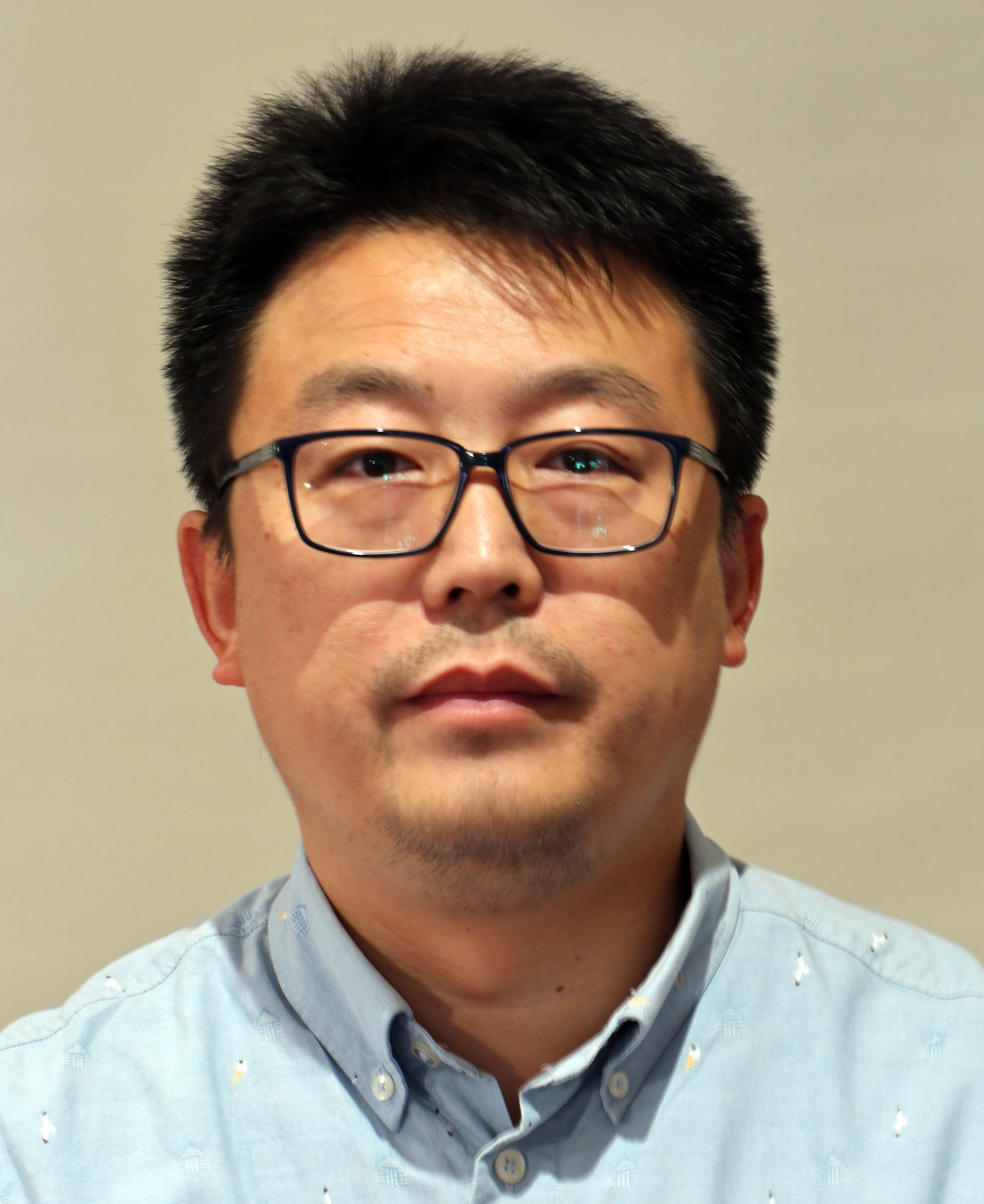You can search for courses, events, people, and anything else.
When heavy metals from industrial activities leach into soil or water, they can cause serious health risks and environmental damage. Exposure to lead, for example, can lead to neurological disorders; while other heavy metals, such as cadmium, disrupt nutrient cycling by reducing the number and diversity of nitrogen-fixing bacteria in plants.
Current methods for detecting heavy metals — such as spectroscopy and chromatography — often require expensive equipment, skilled personnel, and time-consuming sample preparation. These methods may not be readily accessible in resource-limited settings or for individual users. Portable and cost-effective alternatives are urgently needed to make safe drinking water available for all, an aspiration inscribed in the United Nations Sustainable Development Goals.
To address the need for sensitive and accessible detection methods, a team of researchers led by Dr Feng Li, at Western Sydney University’s School of Science, has developed a copper chemosensor based on what is known as a ‘metallo-supramolecular material’. Copper is commonly found in the water from old buildings with copper pipes, and can cause liver and kidney disease when ingested at high doses over long periods of time.
The new sensor — 5-(diethylamino)-2-(2,3-dihydro-1H-perimidin-2-yl)phenol, or ‘HL’ — is not only remarkably sensitive but also produces an optical signal that can be seen with the naked eye.
“Our chemosensor, HL, has three key components: a receptor specific to copper ions, the optical component that produces a visible colour when activated, and an electron donor linking the two,” Li explains.
The researchers have found using spectroscopy, that HL detects copper ions at concentrations as low as 0.235 parts per billion (ppb). However, even without equipment, it produces a visible colour change at 159 ppb, which is well below the World Health Organization (WHO) recommended ‘safe’ human consumption limit of 2,000 ppb.
“Notably, our sensor is water soluble unlike many other chemosensors that rely on organic solvents,” Li says. “This makes it more suitable for real-world applications.”
For example, Li envisions that HL could be useful for individual households, particularly in rural areas reliant on rain or ground water. Unlike large corporations with access to expensive detection equipment, individual households lack the means to conduct comprehensive water testing. When embedded on a paper — similar to pH indicator strips — HL could enable residents to cheaply test their own water quality. This accessibility empowers communities to monitor their own water supply, promoting awareness and proactive measures to mitigate contamination risk.
Though it is yet to be fully commercialised, HL-based copper sensing proved to have a practical use for Dr Daniel Fanna, a former PhD student in Li’s group. Knowing that his grandmother lived in a home with copper pipes, he tested the water after it had been sitting in the pipes for several weeks.
“Although the levels were below the WHO’s recommended limits for drinking water, it nonetheless opened my eyes to why it is important to let the tap run for a while to help flush out contaminants, especially if the tap hasn’t been used in a while,” Fanna said.
In partnership with Western geoscientist Dr Jason Reynolds, the research team has further developed HL to detect copper ions in soil samples as well. Li is now working with Professor Andrew Shalliker, discipline lead of chemical and forensic sciences at Western, to develop and validate a calibrated device that can estimate copper concentration when used in conjunction with an app on a mobile phone.
In addition, Li has developed sensors for detecting other toxic heavy metals, including mercury.
“Ultimately, our goal is to empower stakeholders with the technology to monitor water and soil quality cost-effectively and with immediate results,” Li says. “As we build on our existing work on metallo-supramolecular materials, we also expect to develop sensors for pesticides and even new contaminants of concern.”
Need to know
- Copper can lead to liver and kidney problems when ingested at high levels.
- Western’s Feng Li and team have developed a sensor that can detect low levels of copper ions in water.
- This test could make it possible for communities to cheaply test their own water supplies.
Meet the Academic | Dr Feng Li
Dr Feng Li obtained his PhD in coordination and supramolecular chemistry from Instituto de Tecnologia Química e Biológica (Portugal) in late 2006. He then held a postdoctoral position at the University of Sydney from 2007 to 2012, where he researched metallo-supramolecular chemistry under the guidance of now Emeritus Professor Leonard Lindoy (2007-2009) and inorganic materials chemistry with Professor Cameron Kepert (2009-2012). In February 2012, he was appointed as a Lecturer in Chemistry at Western Sydney University. With over a decade of academic experience at Western, Dr Li has demonstrated a high level of independence and has gained substantial expertise in both theoretical and experimental aspects of molecular recognition in host–guest chemistry, crystallography, metallo-supramolecular chemistry, and the study of magnetic and porous materials. His impactful work is further evidenced by publications in high-quality, internationally recognised journals, including Nature Communications, Angewandte Chemie International Edition, and Chemical Communications. Furthermore, Dr Li has cultivated strategic collaborations with leading researchers both in Australia and internationally, bridging industry and research institutions across various disciplines, which enhances the complementary strengths of his work.
Meet the Academic | Dr Daniel Fanna
Credit
Future-Makers is published for Western Sydney University by Nature Research Custom Media, part of Springer Nature.
© Genevieve Vallee/Alamy
© leipuri/Unsplash






